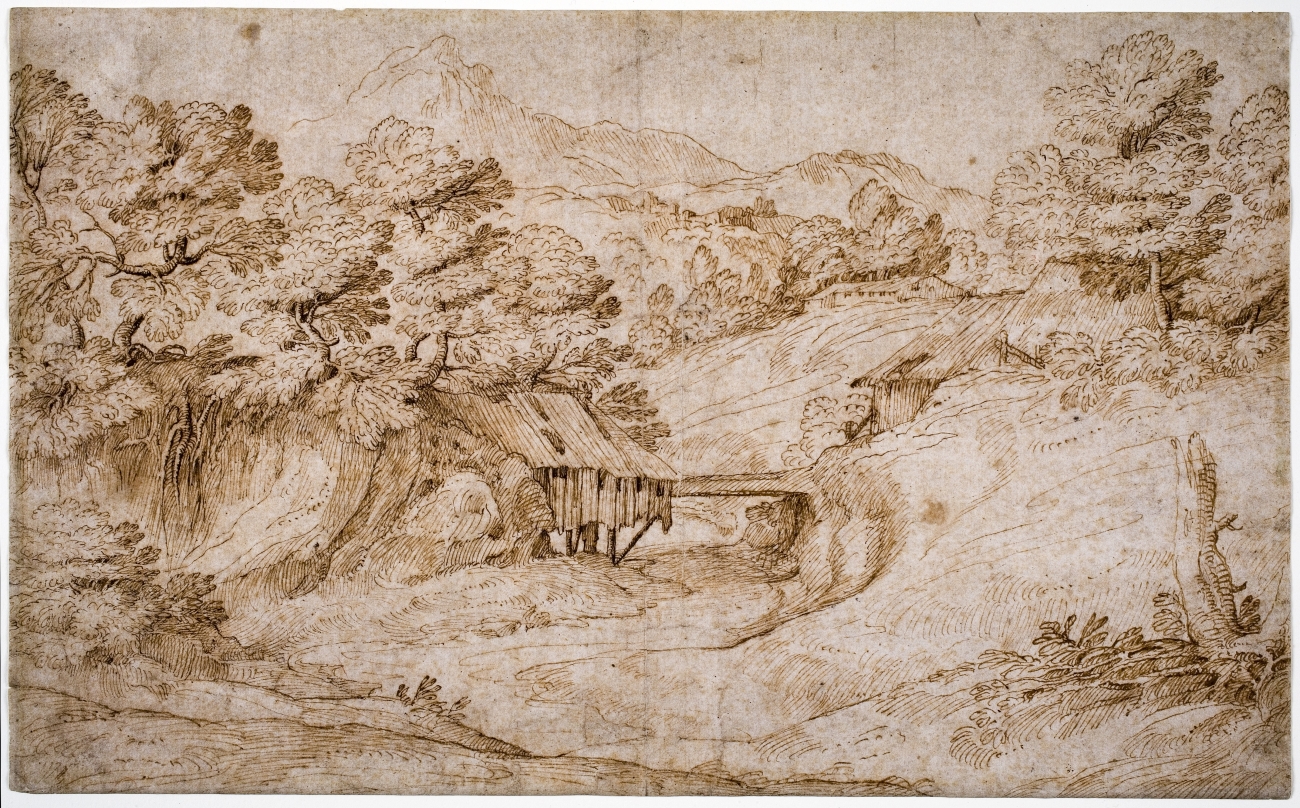Landscape

Domenico Campagnola, b. 1500 Venice, Italy, Landscape, ca. 1517, pen and brown ink, The Dorothy Braude Edinburg (Class of 1942) Collection, given in honor of John McAndrew, as teacher and Museum Director at Wellesley, 1968.66
Domenico Campagnola (c. 1500-1564) likely created this drawing around 1517, making it a compelling example of both his early artistic influences and a budding style that would evolve throughout his lifetime. In the beginning of his career, Campagnola worked in the manner of a group of landscape drawings from sixteenth century Northern Italy, which originated from the circle of Titian. Campagnola was adopted by the engraver Giulio Campagnola whose name he assumed. Moving in Venetian artists’ circles, he likely spent a long period in Titian’s workshop, absorbing the Master’s methods of depicting nature in tranquility, where humble forest patches and rustic houses are mixed with grand, distant vistas.
Campagnola’s Landscape follows this Northern drawing style, typified by clusters of dense forestry juxtaposed to rolling hills, and pastoral buildings seated near streams or on bluffs. These landscapes reflect the natural beauty of the Northern Italian countryside, though are meticulously organized to represent the most ideal version of the natural world. An increasing focus on landscape imagery grew during the Italian Renaissance as more detail was added to the backgrounds of religious scenes, eventually evolving into its own artistic subject matter. Domenico Campagnola took inspiration from Titian in creating these drawings as independent, complete artworks—not as preparatory sketches for later paintings, as is true in many cases. This drawing parallels a woodcut from Campagnola’s later career, his St. Jerome in Landscape of 1540, and exemplifies how these early influences endured and evolved throughout his life.
-Gwen Zwirko, Class of 2019
The Dorothy Braude Edinburg (Class of 1942) Collection, given in honor of John McAndrew, as teacher and Museum Director at Wellesley 1968.66